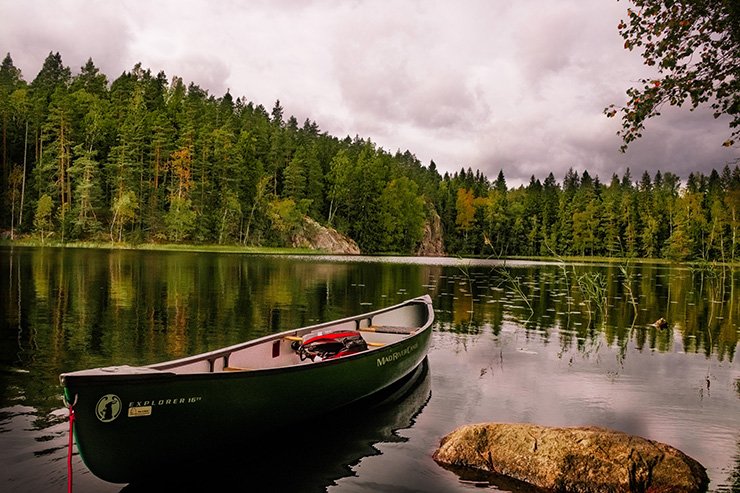The history of canoes dates far back, thousands and thousands of years ago. Canoeing started as a means of transport, but today it’s mainly recreational.
If you intend to get into canoeing, then size must be one of the biggest questions on your mind. This is because you have to figure out storage, transportation, and other factors.
So how long and wide are canoes? Unfortunately, this question has no straight answer, as canoes come in different sizes. But generally, canoes range from 10 feet to a little over 20 feet long and 27 to about 40 inches wide. You can also find canoes with dimensions that are outside of this range.
To better answer your question and clarify, I will detail the length and width of canoes below. It all comes down to the kind of paddler that the canoe is made for. Keep reading.
Key Takeaways
- The standard length of a canoe is 16 to 17 feet, which balances maneuverability, tracking, and speed. The standard width of a canoe is 33 to 36 inches, which offers good initial stability. These sizes make versatile and beginner-friendly canoes.
- The length of a canoe determines its speed, tracking, and maneuverability. Longer canoes are faster and track better, but are harder to turn. Shorter canoes are more agile and responsive but are slower and less stable.
- The width of a canoe influences its stability and efficiency. Wider canoes are more stable and can hold more weight, but are slower and require more effort to paddle. Narrower canoes are faster and easier to paddle, but are less stable and have less capacity.
- Different canoeing disciplines, such as recreational, touring, racing, fishing, multipurpose, and whitewater canoeing, require different canoe sizes that prioritize certain performance aspects.
What Is the Average Canoe Length?
The length of a canoe, first of all, is the distance from stern to bow. It’s a pretty simple and straightforward dimension.
Most canoes are 16 to 17 feet long. Boats that are this long are all-around in that they balance maneuverability, speed, and tracking. They are, thus, more versatile and can be used for different canoeing activities.
It usually depends on the type of canoe and its intended purpose. Longer canoes, for instance, tend to have better performance. So touring canoes will be long, around 17 feet or longer. We’ll get deeper into canoe lengths and performance below.
There are also boats designed for two people–tandem canoes. As you can imagine, these will also be much longer to allow them to accommodate more than one paddler.
More length translates to a higher carrying capacity, so camping canoes also tend to be on the longer side. They offer more space for your camping gear.
Shorter canoes, on the other hand, are those that are 14 feet or shorter. These are usually solo canoes or those made for whitewater canoeing and other activities that require high maneuverability.
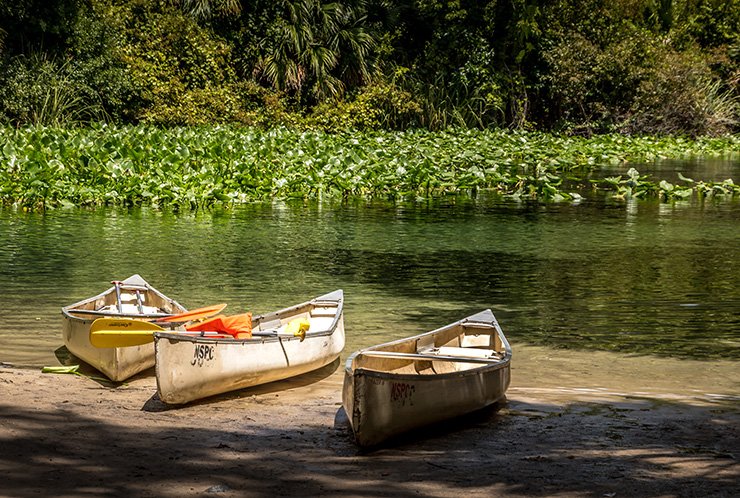
How Long Is the World’s Longest Canoe?
According to the Guinness World Records, the longest canoe in the world is 149’1 long. Teachers and students in a high school in Maine, USA, created it as a project to raise money for a charity cause. They constructed the canoe by joining multiple sections together.
However, the canoe didn’t last long as one of the sections broke.
How Does Canoe Length Affect Performance?
As you have seen, canoes come in a wide range of sizes, usually from 10 feet to 20+ feet, and you can find other specialty canoes outside of that range. This is because different canoes are designed for different purposes and types of canoeists.
There are several canoeing disciplines. The most popular ones include recreational, touring or tripping, racing, fishing, multipurpose, and whitewater canoeing.
Each activity requires a canoe that prioritizes a certain performance aspect, hence the difference in canoe length.
Long canoes have more storage space, and they track better–meaning that they travel in a straight line. A longer canoe also glides with great speed, and you can cover more distance in a shorter time. Boats like these, therefore, make good touring and racing canoes.
While expedition canoes have great speed and tracking capabilities, the length can make them harder to handle. Making quick sharp turns will be more challenging.
Short canoes may not have remarkable tracking and speed, but they are much more maneuverable and easier to turn. Because of these qualities, shorter canoes are best suited for whitewater paddling. They are responsive and handle well in rough water, which is exactly what you need when paddling rapids.
In between these two categories is where you find recreational canoes. The average length of a recreational canoe balances speed and maneuverability. As the name suggests, this type of canoe is good for relaxed paddling on a calm lake or slow-moving rivers.
Recreational boats are the best for beginners too.
Note: In addition to length, other factors affect the performance of your canoe. These include the hull shape, canoe materials, among others. It’s something you should have in mind when considering various canoe lengths.
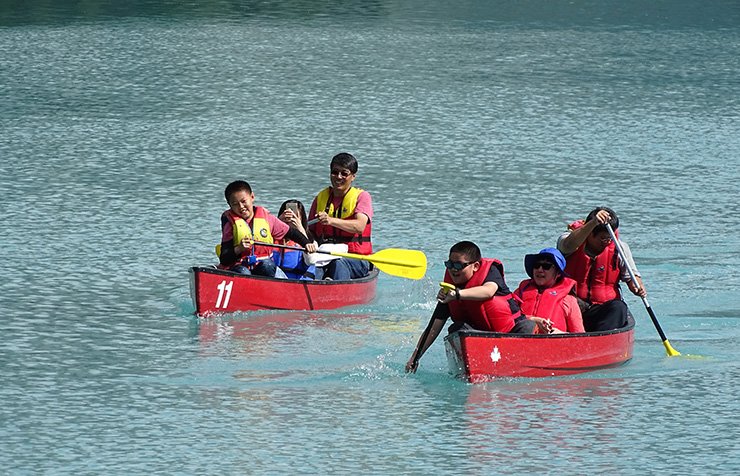
How Long Should a Canoe Be?
The answer to this question depends on what you want to use the canoe for and where you want to use it.
A tandem canoe, for instance, has to be longer than a solo canoe in order to hold two paddlers comfortably.
Go for a long canoe if you want speed and great tracking. But understand that the longer the canoe, the harder it will be to maneuver. For whitewater canoeing, you’ll want a shorter canoe that is super responsive to your paddling strokes and easy to turn.
What Is the Average Canoe Width?
Most canoes range from 27 to 40 inches wide, with many of them falling under 33 to 36 inches. Just like canoe length, it all boils down to the intended use of the canoe.
The standard width of a canoe is 33 to 36 inches. Most recreational, camping, and tandem kayaks fall under this range. The canoes have good initial stability and are ideal for paddling flat water. More on how the width affects a canoe’s performance below.
Narrow width canoes, under 33 inches, are typically racing and touring boats. On the much wider side, you have canoes designed to hold a lot of gear or multiple people.
How to Measure the Width of a Canoe
While the length of a canoe is a more straightforward dimension, the width isn’t.
The width of a canoe is also referred to as the beam, and it’s the distance between the gunwales at the widest point. It could also be the boat’s width at the waterline because this gives an idea of how much effort is required to paddle and propel the canoe.
So when shopping around for canoes, you might see several widths given.
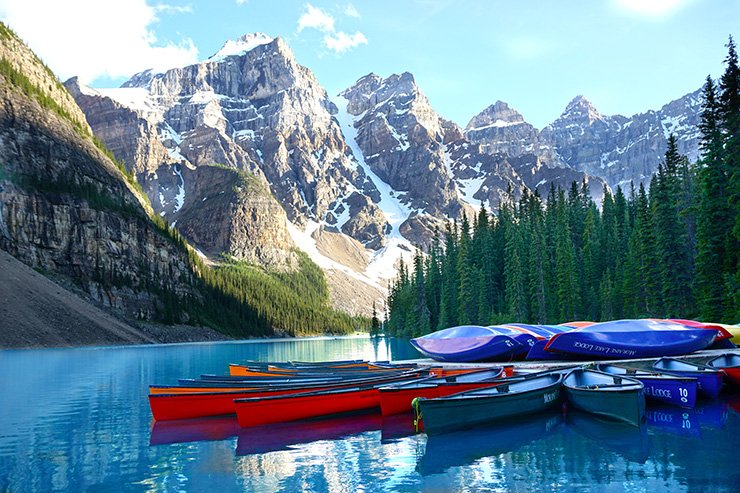
Why the Width of a Canoe Matters
A canoe’s width is important and significantly affects your paddling experience.
Narrow canoes face less resistance when moving on the water, which translates to less effort required to paddle efficiently. However, their stability could be better, and they can feel tippy, especially in calm water.
Racing canoes are typically relatively narrow. This, plus their length, creates a streamlined shape that allows them to easily glide on the water.
Wider canoes have excellent primary stability, but they can be slow. This is where most fishing canoes fall. Speed is usually not a huge priority when fishing, but you need a stable platform to sit or stand as you reel in your catch.
Note: primary stability is the initial stability of your canoe when it is sitting on calm water. Canoes with good primary stability are ideal for flatwater paddling. Secondary stability, on the other hand, is the stability of your boat when it is leaning on its side.
What Size Canoe Should You Get?
When choosing a canoe, size is one of the most important factors to consider. Canoe dimensions have a huge impact on the performance of your boat, how much weight it can hold, and its ease of transport and storage.
Something in the 16 to 17 feet range would be ideal for a recreational canoe. It can accommodate you and a partner plus a dog while still allowing you to bring enough gear. Consider looking at shorter solo canoes, no more than 14 feet, if you want something just for yourself. It will be easier to paddle and transport solo.
The nature of your canoeing adventures is another key factor to consider when picking a size. Long canoes, around 19 feet, are best suited for tripping–where you go on long canoe trips, sometimes for multiple days, maybe with family.
Whitewater canoeing requires a short canoe for efficient paddling in rough water. Shorter canoes are much more agile and maneuverable, especially if they also have more rocker.
Frequently Asked Questions About Canoe Length and Width
How Wide Is a 17-Foot Canoe?
Different 17-foot canoes will have different widths, depending on their intended use. For instance, a 17-foot tripping or tandem canoe has to be wide for stability. The length and width also translate to a higher weight capacity to accommodate all your gear.
However, a 17-foot solo canoe designed for speed could be as narrow as 28 inches. This creates a streamlined shape that allows the paddler to enjoy smooth and fast canoe rides.
What Is the Standard Length of a Canoe?
The standard length of a canoe is 16 to 17 feet long. Average length canoes balance maneuverability, tracking, and speed. They are stable, easy to handle, and can be tandem or solo canoes.
This balance makes them versatile and ideal for different paddling situations.
How Long Are 3-Person Canoes?
A three-person canoe can be anywhere from 17 to 20 feet long. Those on the longer side can usually accommodate more than three paddlers plus their gear.
What Type of Canoe Is the Most Stable?
Fishing canoes are some of the most stable as they are wide with a flat hull. They are designed to have exceptional primary stability for anglers. With some fishing canoes, you can even stand comfortably and fish or hunt without taking a swim. Recreational canoes are also quite stable and beginner-friendly.
How Long Is an Old Town Canoe?
Old Town Canoes range from 11 to about 17 feet in length. On the longer side, you have canoes that glide with ease on the water and can hold a lot of gear for multi-day trips. The Penobscot 174, for instance, has a carrying capacity of 1500 pounds.
On the shorter side, you have smaller canoes best suited for a solo paddler. They are shorter, narrower, and easier to carry and paddle.
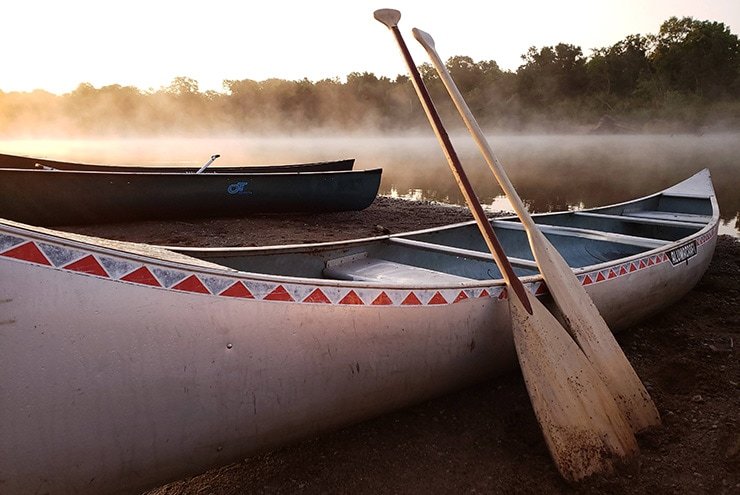
Wrapping Up
In general, canoes range from 10 to a little over 20 feet in length, depending on the intended use. The standard canoe length is 16 to 17 feet long. This length allows versatility; you can find both tandem and solo canoes.
Shorter canoes are more maneuverable and agile. They make better whitewater canoes. Longer canoes track well and have good speed. They are great for long-distance touring and racing.
When it comes to width, canoes can be anywhere from 27 to 40 inches wide. A wide canoe offers excellent primary stability. Because of this, wide canoes make good fishing, hunting, and beginner canoes.
Narrower canoes cut through the water with minimal resistance and are ideal for racing and long-distance touring.
If you’re looking to buy a canoe, you have to consider what and how you want to use it to figure out what size is right for you.

